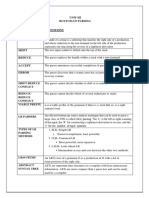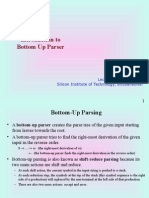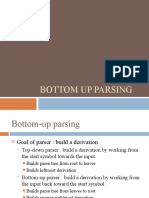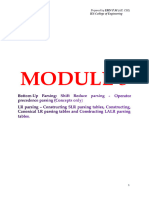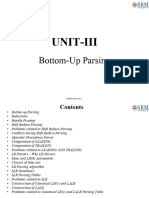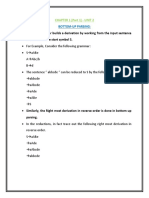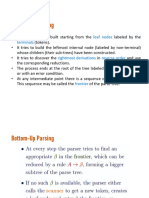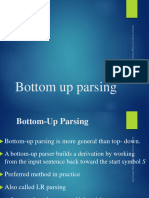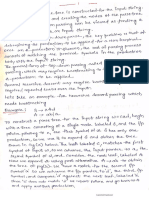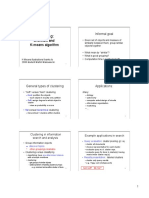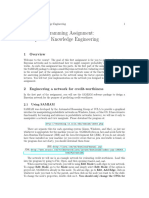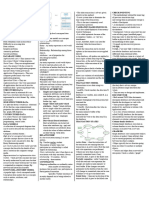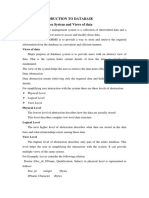0% found this document useful (0 votes)
21 views17 pagesCompiler Design
The document discusses Bottom-Up Parsing, specifically Shift-Reduce Parsing, which builds a parse tree from input tokens to the start symbol using shift and reduce operations. It highlights the challenges of parsing conflicts, such as Shift-Reduce and Reduce-Reduce conflicts, and introduces the Operator Precedence Parser as a specialized solution for arithmetic expressions. Additionally, it covers LR Parsers, their types, advantages, and the construction of SLR parsing tables, emphasizing their efficiency and ability to handle a wide range of grammars.
Uploaded by
ar4462Copyright
© © All Rights Reserved
We take content rights seriously. If you suspect this is your content, claim it here.
Available Formats
Download as DOCX, PDF, TXT or read online on Scribd
0% found this document useful (0 votes)
21 views17 pagesCompiler Design
The document discusses Bottom-Up Parsing, specifically Shift-Reduce Parsing, which builds a parse tree from input tokens to the start symbol using shift and reduce operations. It highlights the challenges of parsing conflicts, such as Shift-Reduce and Reduce-Reduce conflicts, and introduces the Operator Precedence Parser as a specialized solution for arithmetic expressions. Additionally, it covers LR Parsers, their types, advantages, and the construction of SLR parsing tables, emphasizing their efficiency and ability to handle a wide range of grammars.
Uploaded by
ar4462Copyright
© © All Rights Reserved
We take content rights seriously. If you suspect this is your content, claim it here.
Available Formats
Download as DOCX, PDF, TXT or read online on Scribd
/ 17













